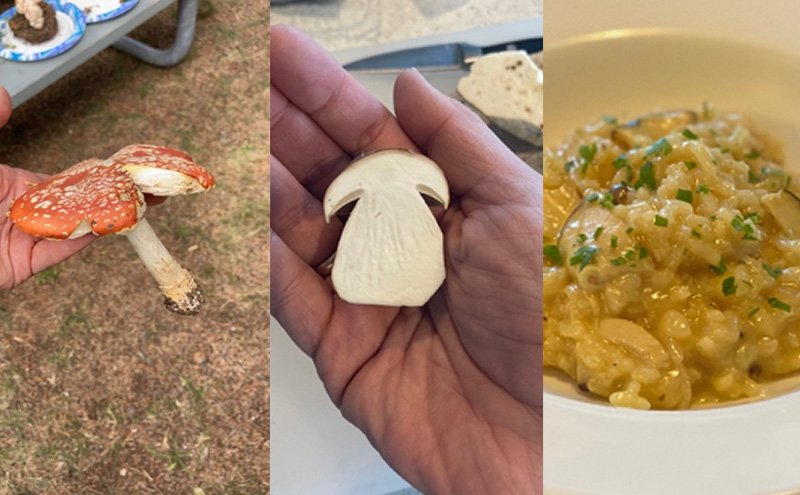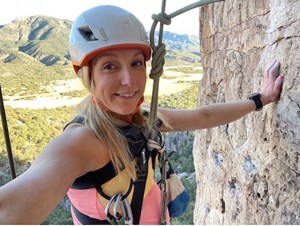
“Can I eat it?”
I’m not sure exactly how it started happening, but perhaps given my overlapping interests in food, foraging, and wilderness medicine, my friends have sent me numerous photos of mushrooms in the last few years with the question, “Can I eat it?” My answer is always, “No!” So I was delighted when the University of Colorado Toxicology program invited the Wilderness Medicine folks to join them on their annual mushroom hunt in August. Now I had the chance to ask, “Can I eat it?” to an actual expert.
We started the day by meeting at Copper Mountain, Colorado for initial introductions to our teachers Dr. Barry Rumack, toxicologist, and Ed Lubow, mycologist. It was also a sneak peek of what was to come: a picnic table laden with mushrooms picked the day prior. After a review of the spoils, we split into groups and drove to the super-secret mushroom hunting sites to see what we could find.
Armed with masks, knives, baskets, and a veteran mycologist, we started our hunt at the grassy edges of a pine forest at 9,500 ft. After a few minutes, I spotted a rusty brown cap, that looked like a pretzel bun playing hide-and-seek. This turned out to be our first major find of the day: a king bolete, or porcini mushroom (Boletus rubriceps). Sure, it was already slightly chewed by some woodland critter, but that did nothing to dampen the thrill of the hunt. We found several other small porcinis, and many hawks wing mushrooms (Sarcodon imbricatus), before meeting back up with the main group.
Back together and 6-ft apart, the mycologists sorted our mushrooms by species onto paper plates, then began to explain each. Although many mushrooms were discussed, my rumbling stomach was mostly interested in learning about the tasty edibles and deadly no-no’s. We learned that the porcinis have the following: white to olive green tubes rather than gills which separate easily from under their ‘penny bun’ caps, a lacy or reticular white pattern on the stems, flesh that does not bruise blue, and sometimes maggots. We were surprised to find out that true golden chanterelles (Cantharellus cibarius) grow on the ground rather than dead trees. They also have false gills that run down the stem and give off an apricot-like odor that becomes pronounced when placed in a bag for 30 minutes. We were awed at seeing the infamous, red and white Lewis-Carroll-inspiring fly agaric (Amanita muscaria), and realizing that it looks absolutely nothing like the sinister but innocuous appearing death cap (Amanita phalloides), from which amatoxin is derived. And we were terrified to learn that young, edible puffballs (a catch-all term for multiple genera) are indistinguishable from young death caps until cut in half.
The best part of the day, however, came at the end. The mycologists began bagging mushrooms to take home and giving advice, which basically could be summarized as, “Try not to eat too many maggots in the porcinis,” and, “Everything tastes good in butter.” My family/pandemic pod was treated to porcini risotto that night, which was every bit as good as it sounds. So, for once, the answer to, “Can I eat it?” was, “Absolutely – enjoy.”
Mia Derstine, MD



